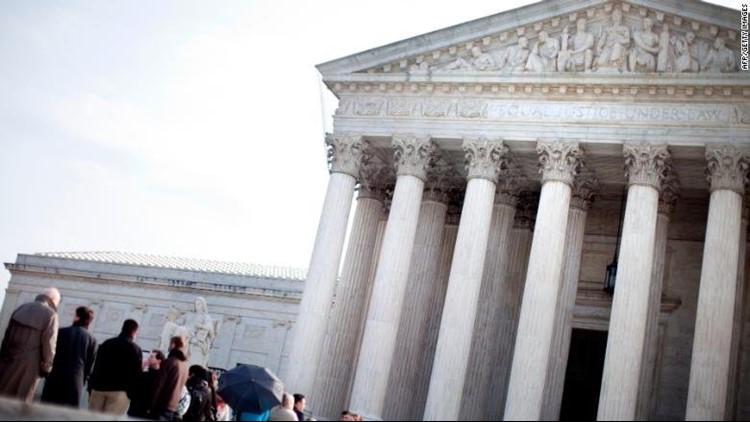After a frantic few weeks to reach an end of June deadline, the Supreme Court justices will don their robes on Monday to wrap up the term sometime this week.
The final days can be brutal as draft opinions fly between chambers and the nine justices — four of whom are in their 70s and 80s — finalize their work.
Six opinions remain, including on the travel ban, public sector unions and redistricting, and one looming question that could change the future direction of the court: Will there be a retirement?
Here’s who and what to watch this week:
Anthony Kennedy
One of the best parlor games in Washington is the speculation concerning whether Anthony Kennedy, who often casts the critical swing vote on the court, will decide to step down.
Kennedy is 81 years old and has spent some 30 years on the bench. If President Donald Trump were to get another vacancy, he’d undoubtedly choose a younger, more conservative justice who could solidify the court’s conservative majority for years to come.
Former clerks say they believe Kennedy will retire sometime during a Republican administration, but aren’t sure when. In recent years, justices have written letters to the White House to reveal their plans but there is precedent for an announcement from the bench. Timing is also uncertain. Justice Sandra Day O’Connor, for example, made her decision a few days after the term ended in 2005. No one knows but Kennedy himself if he has decided to step down.
The travel ban
More than a year after Trump stunned the world and caused chaos in the airports by restricting travel from several Muslim majority countries, the Supreme Court will decide on the legality of the third version of the ban. The Supreme Court allowed it to go into effect last December pending appeal.
Travel Ban 3.0 was issued in September — after previous bans had ricocheted through the courts — and is a Presidential Proclamation officially titled “Enhancing Vetting Capabilities and Processes for Detecting attempted Entry into the United States by Terrorists or other Public-Safety threats.”
It was signed on the recommendation of the secretary of Homeland Security and the attorney general after the administration completed a worldwide review as to the vetting procedures of several countries. It restricts entry from seven countries to varying degrees: Iran, North Korea, Syria, Libya, Yemen, Somalia and Venezuela. Chad was originally on the list but it was recently removed after having met baseline security requirements.
Challengers, including the state of Hawaii, argue the proclamation exceeds the President’s authority under immigration law as well as the Constitution. They say there was no national security justification for the ban and that during the campaign the president demonstrated animus when he called for a so-called “Muslim ban.”
The administration contends, however, that the President acted in accordance with the law and his executive power to protect national security.
Solicitor General Noel Francisco emphasized to the justices that this is “not a so-called Muslim ban.”
“It excludes the vast majority of the Muslim world,” he said, and added that the presidential order was based on “neutral” criteria and crafted after a “multi-agency review” of vetting procedures around the world.
Public sector unions
Another big case that remains on the docket concerns the financial future and stability of public sector unions.
At issue is an Illinois law that requires nonmembers of public sector unions to pay fees that go to collective bargaining. Nearly half the states have similar laws impacting thousands of contracts concerning millions of employees.
Court precedent holds that while non-members cannot be required to pay fees for political activities of the unions, they can be required to pay so called “fair share fees” that go to issues related to collective bargaining.
An Illinois government worker is challenging the law on free speech grounds arguing that in the context of a public sector unions, even fees concerning issues like wage disputes are inherently political. He has drawn the support of anti-union Right to Work groups.
Democrats and supporters of unions argue that if nonmembers don’t have to pay for the negotiations that the unions engage in on their behalf, they will become free riders on the system, benefitting from the union’s negotiations without having to make financial contributions. They are fearful that the justices will overturn nearly 40-year-old precedent and weaken the coffers of public sector unions at a time when membership as a whole is already in decline.
Faith-based pregnancy centers, Texas redistricting
The justices will also decide a case brought by faith-based licensed pregnancy centers who are challenging a 2015 California law that requires them to disseminate a notice stating that California offers publicly funded family planning services including abortion. The groups say they are being targeted for their opposition to abortion and that the state can’t compel them to post such notices that are contrary to their mission to encourage childbirth.
And the justices will step into a more than decade old fight concerning congressional and state legislative maps in Texas that were invalidated as discriminatory against minority voters.



